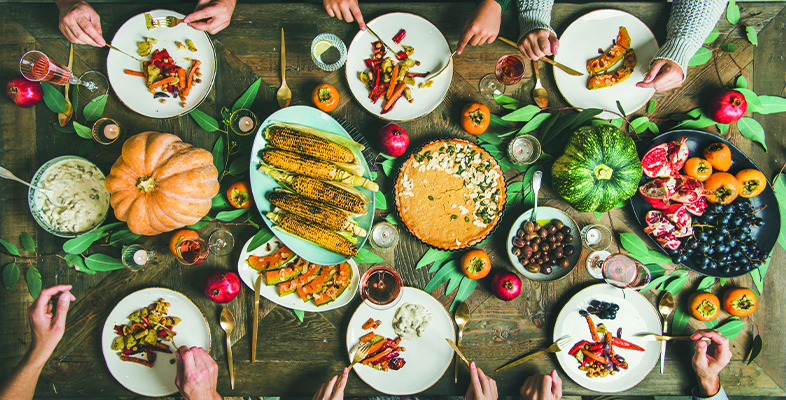4.1 Exploring Dinner Plate Diversity
You will now use the Dinner Plate Diversity interactive tree to help you explore the biodiversity found in the food you eat. The resource presents over 750 of the more common species that humans eat, in a way that allows you to look at how closely related species are to each other. (Note: the inclusion of a species in this tree is not a recommendation that you should necessarily eat all of these species). The species are arranged so that the more closely related any two species are, the shorter the length the branches that join them to a common node. This type of diagram is called a phylogenetic tree.
Now click ‘View interactive version’ to access the Dinner Plate Diversity tree. You will be using this in the following sections so you should open the link in a new browser window or tab so you can follow the instructions in the course at the same time.
Note that the following sections are best undertaken on a computer or tablet, rather than a phone or a similar device with a small screen.
You can see that five kingdom taxons are shaded: Prokaryota, Fungi, Animalia, Protista and Plantae. Some of these names might be rather familiar or intuitive – the Plantae or plant kingdom includes all plants, Animalia or animal kingdom includes all animals, and the Fungi family consists of all fungal species.
Protista includes eukaryotic organism, in which cells have nuclei but it is not an animal, plant or fungus. It is not a natural group, or clade, since they have no common characteristic origin, but, they are often grouped together for convenience. This kingdom also includes the red and brown algae.
The Prokaryota includes unicellular organisms that lack a membrane-bound nucleus, such as bacteria.
It is important to note that the relative number of species in each of these groups in the edible species tree is very different from the distribution in global biodiversity, and different again from those that are described by taxonomists. For example, it is estimated that there are about 7 770 000 species of animals, 611 000 species of fungi and 298 000 species of plants (Mora et al., 2011), giving a ratio of roughly 26 : 2 : 1, respectively. This breakdown is very different from the proportions shown in the screenshot above..
It is also notable that two kingdoms are missing: Protozoa and Chromista. While you probably ingest some of these predominantly microscopic organisms in your diet, they are not generally intentional ingredients and are therefore excluded from the interactive tree.
Next you will explore the taxonomy of, or relatedness among, plant and animal species that make up your dinner plate.
